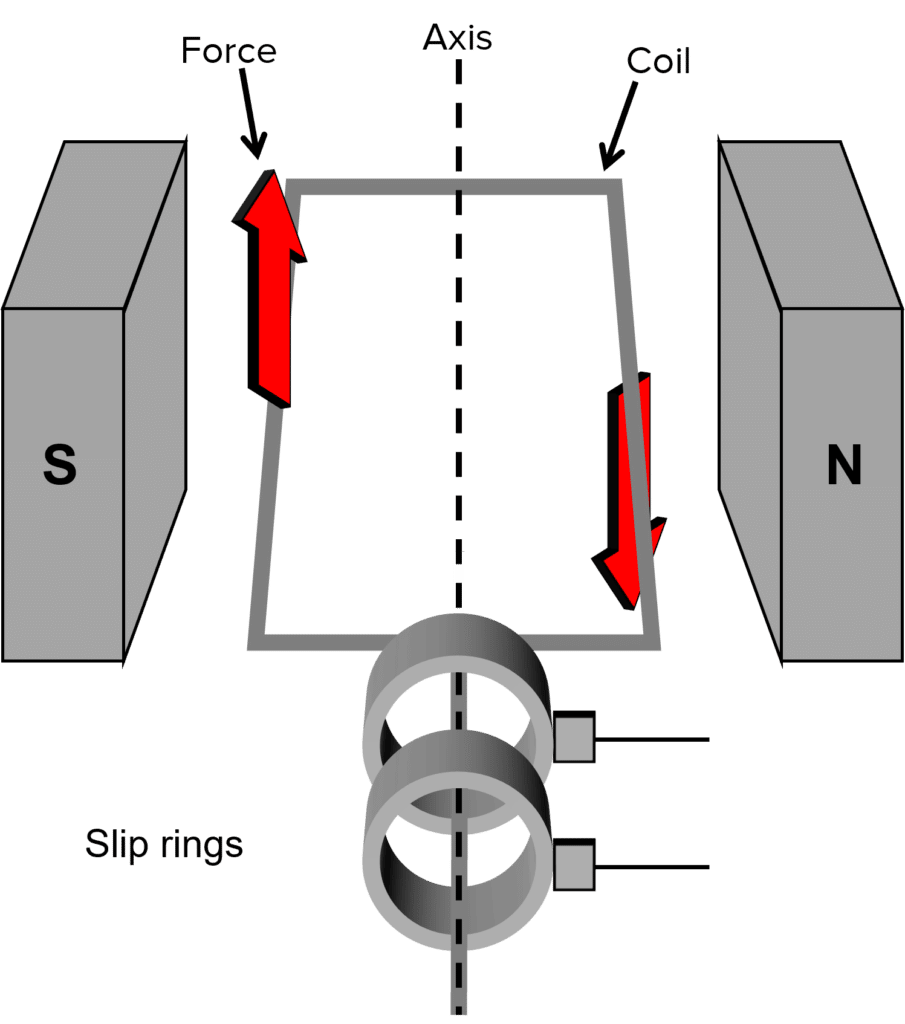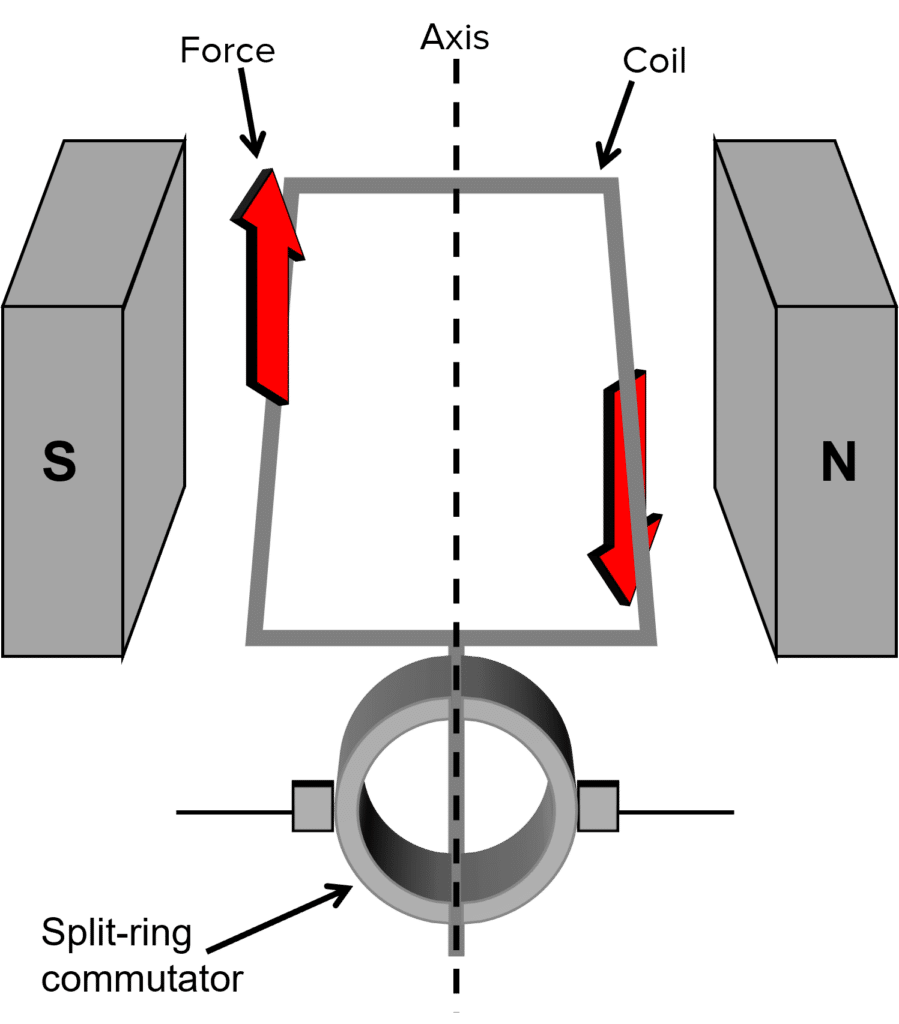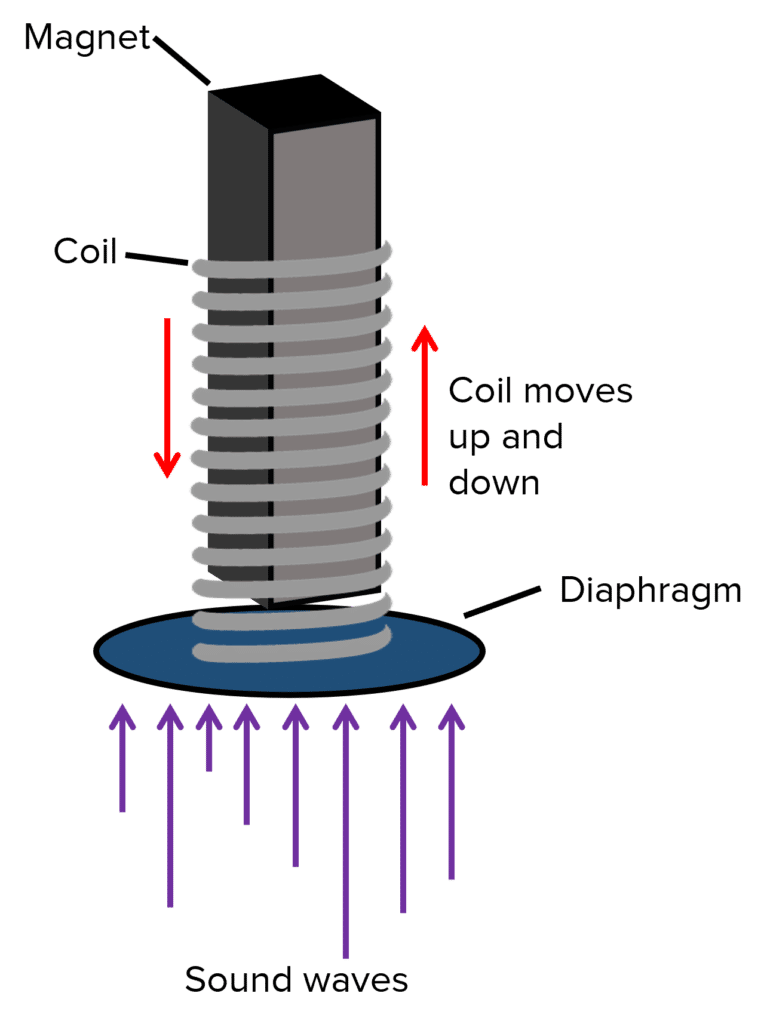The Generator Effect
The Generator Effect Revision
The Generator Effect
The generator effect is the generation of a current in a wire moving relative to a magnetic field. Practical applications of this effect include dynamos and microphones.
How the Generator Effect Works
The Generator Effect:
A potential difference can be induced across a conductor if:
- an electrical conductor moves relative to a magnetic field
or
- there’s a change in the magnetic field around an electrical conductor
A current is also induced in the conductor, if the conductor is part of a complete circuit.
The diagram shows a magnet being moved inside a coil of wire. The magnet is generating the magnetic field, and the coil of wire is the electrical conductor. Therefore, there is an electrical conductor moving relative to a magnetic field, and hence a potential difference is induced around the coil of wire. This is an example of the generator effect.

If you were to reverse the polarity of the magnet, the induced potential difference and current would be reversed. Similarly, if you were to move the magnet in the opposite direction the potential difference and current would be reversed.
We are talking about direct currents here. However, imagine you were to constantly move the magnet or conductor forward and back. Because the direction of the potential difference would keep changing, an alternating current will be induced.
Rules of the Generator Effect
Rule 1: The induced current opposes the change that made it.
This is because the induced current produces a magnetic field around the wire (a different magnetic field than the one the wire was placed in). This magnetic field acts against the original field created by the magnet, as if it is trying to balance things out. Therefore the induced current will always oppose the change that made it, whether that be the electrical conductor moving or a change in the original magnetic field.
Rule 2: The size of the induced potential difference depends on the rate that the magnetic field is changing.
You can increase the rate that the magnetic field is changing and hence increase the induced potential difference by either:
-
- Increasing the speed of the movement
- Increasing the strength of the magnetic field
Alternators and Dynamos

Alternators
Alternators are generators that create alternating current.
A coil in-between a magnet rotates due to the magnetic field. As the coil rotates, a current is induced across it (the generator effect). Every half rotation the current changes direction, hence producing an alternating current and potential difference.
The slip rings differ from a split-ring commutator because they don’t swap the connection. This allows the current to change direction when the coil rotates. Because the current changes direction when the coil rotates, an alternating current is generated rather than a direct current.

Dynamos
Dynamos generate direct current.
The key difference between an alternator and a dynamo is that a dynamo has a split-ring commutator. This swaps the connection at every half rotation, allowing the current to continue moving in the same direction even as the coil rotates.
Because the current continues moving in the same direction, a direct current is generated.
Microphones

Microphones work by using the generator effect.
The structure of a microphone includes a magnet with a coil of wire wrapped around it.
The coil of wire is also attached to a diaphragm. When someone speaks into the microphone, the sound waves hit this diaphragm. Because the diaphragm is connected to the coil, the pressure variations of the sound wave are transferred into variations of movement on the coil via the diaphragm.
This movement of the coil induces a current with the same variations as the sound wave.
The Generator Effect Example Questions
Question 1: Explain what is meant by “The Generator Effect”.
[3 marks]
The generator effect is when an electrical conductor moves relative to a magnetic field or if there’s a change in the magnetic field around a conductor. As a result, a potential difference is induced across the conductor.
Question 2: Give two ways you could change the size of the induced potential difference in the generator effect.
[2 marks]
You could:
- Increase the speed of the movement of the magnet or coil
- Increase the strength of the magnetic field
Question 3: State two differences between a dynamo and an alternator.
[2 marks]
- Dynamos generate direct current, alternators generate alternating current.
- Dynamos contain a split-ring commutator, alternators do not.
Question 4: Describe how a microphone is able to convert the pressure variations in sound waves into variations in current.
[4 marks]
A microphone has magnet in the middle of a coil attached to a diaphragm.
Sound waves hit this diaphragm and pressure variations of the sound wave are converted into variations of movement on the coil.
This movement of the coil induces a current with the same variations as the sound wave.





